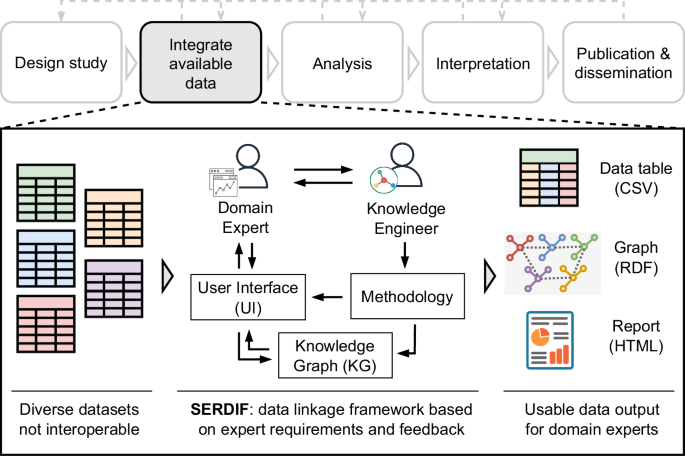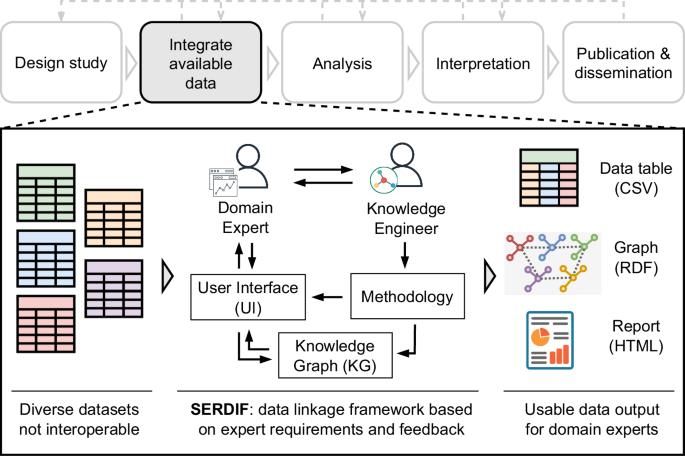Enabling data linkages for rare diseases in a resilient environment with the SERDIF framework
IF 12.4
1区 医学
Q1 HEALTH CARE SCIENCES & SERVICES
引用次数: 0
Abstract
Environmental factors amplified by climate change contribute significantly to the global burden of disease, disproportionately impacting vulnerable populations, such as individuals with rare diseases. Researchers require innovative, dynamic data linkage methods to enable the development of risk prediction models, particularly for diseases like vasculitis with unknown aetiology but potential environmental triggers. In response, we present the Semantic Environmental and Rare Disease Data Integration Framework (SERDIF). SERDIF was evaluated with researchers studying climate-related health hazards of vasculitis disease activity across European countries (NP1 = 10, NP2 = 17, NP3 = 23). Usability metrics consistently improved, indicating SERDIF’s effectiveness in linking complex environmental and health datasets. Furthermore, SERDIF-enabled epidemiologists to study environmental factors in a pregnancy cohort in Lombardy, showcasing its versatility beyond rare diseases. This framework offers for the first time a user-friendly, FAIR-compliant design for environment-health data linkage with export capabilities enabling data analysis to mitigate health risks posed by climate change.


利用 SERDIF 框架,在弹性环境中实现罕见疾病的数据链接。
因气候变化而放大的环境因素极大地加重了全球疾病负担,不成比例地影响着弱势群体,如罕见病患者。研究人员需要创新的动态数据关联方法来开发风险预测模型,尤其是针对像脉管炎这样病因不明但有潜在环境诱因的疾病。为此,我们提出了语义环境与罕见病数据整合框架(SERDIF)。欧洲各国(NP1 = 10、NP2 = 17、NP3 = 23)研究脉管炎疾病活动与气候相关的健康危害的研究人员对 SERDIF 进行了评估。可用性指标持续改善,表明 SERDIF 在连接复杂的环境和健康数据集方面非常有效。此外,SERDIF 还帮助流行病学家研究了伦巴第大区妊娠队列中的环境因素,展示了其在罕见病之外的多功能性。该框架首次为环境与健康数据连接提供了一个用户友好、符合 FAIR 标准的设计,并具有数据分析的输出功能,以减轻气候变化带来的健康风险。
本文章由计算机程序翻译,如有差异,请以英文原文为准。
求助全文
约1分钟内获得全文
求助全文
来源期刊

NPJ Digital Medicine
Multiple-
CiteScore
25.10
自引率
3.30%
发文量
170
审稿时长
15 weeks
期刊介绍:
npj Digital Medicine is an online open-access journal that focuses on publishing peer-reviewed research in the field of digital medicine. The journal covers various aspects of digital medicine, including the application and implementation of digital and mobile technologies in clinical settings, virtual healthcare, and the use of artificial intelligence and informatics.
The primary goal of the journal is to support innovation and the advancement of healthcare through the integration of new digital and mobile technologies. When determining if a manuscript is suitable for publication, the journal considers four important criteria: novelty, clinical relevance, scientific rigor, and digital innovation.
 求助内容:
求助内容: 应助结果提醒方式:
应助结果提醒方式:


